This soda bread recipe is sweeter and richer than traditional Irish soda bread. Those are usually made with just flour, baking soda, salt, and buttermilk. This recipe also includes sugar, butter, and caraway seeds. It makes a bread that tastes almost like a sweet scone. Make it for St. Patrick’s Day or all year round.

Ingredients
Here’s what you need to make this recipe. Most of the ingredients are pantry staples. The two you might need to get are the buttermilk and caraway seeds. For this recipe, use store-bought buttermilk. Homemade buttermilk, made with a combination of milk and lemon juice, doesn’t have the flavor or thickness the bread requires.
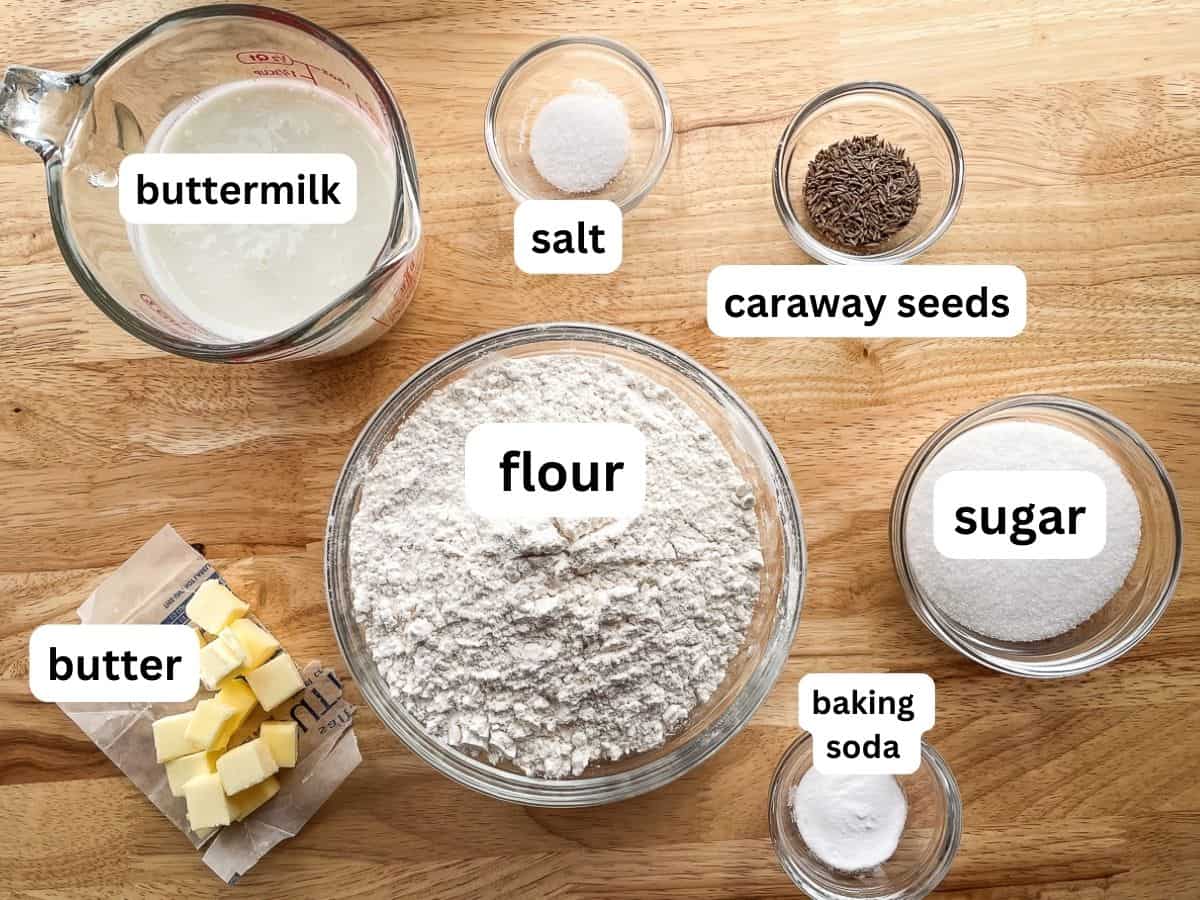
- Flour. All-purpose flour is perfect for this bread. It makes for a tender loaf.
- Baking soda. This is where the name “soda bread” comes from. Use fresh baking soda for the best rise.
- Salt. Enhances all the other flavors.
- Butter. Use cool butter. I like to use salted butter.
- Sugar. Adds a nice sweetness.
- Buttermilk. Makes the bread tender. Adds a nice flavor. Use store-bought buttermilk. It’s thick texture and tangy flavor is perfect for this bread.
- Caraway Seeds. Adds crunch and a subtle almost anise-like flavor.
How to Make Irish Soda Bread with Caraway Seeds.
You only need one bowl to make this recipe! The longest part is working the butter into the flour. It’s worth the time it takes! The cold butter gives the bread a delicate texture. Here’s how to put the bread together.
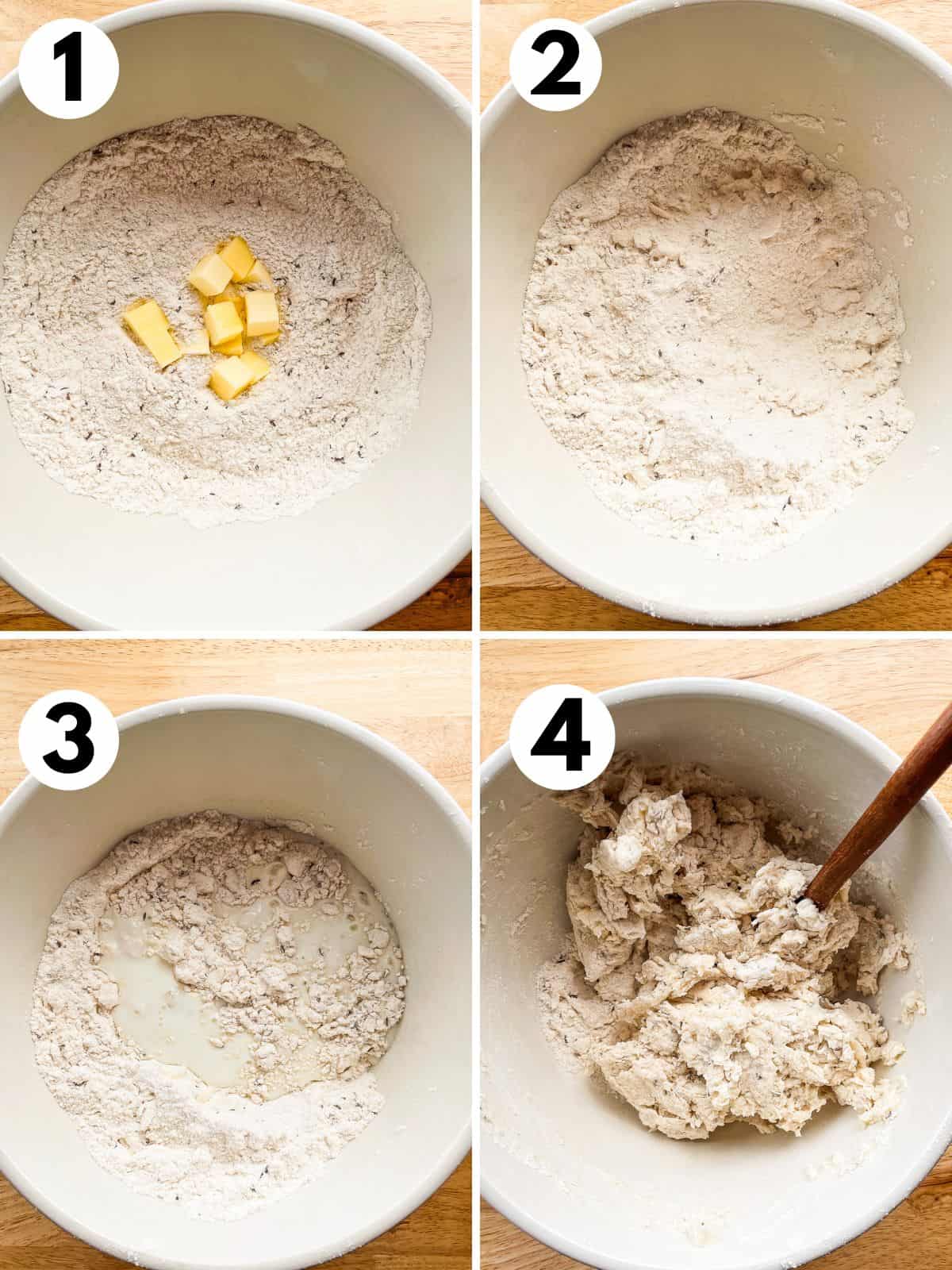
- Whisk together the dry ingredients. This mixes the sugar, caraway seeds, baking soda, and salt evenly throughout the flour.
- Mix in the cold butter. You can rub it in with your fingers or use a pastry cutter. Work it in until no large pieces of butter remain.
- Add the buttermilk. Do this after you’ve worked the butter into the flour.
- Stir until a shaggy dough forms. If the dough seems dry, add a little more buttermilk.
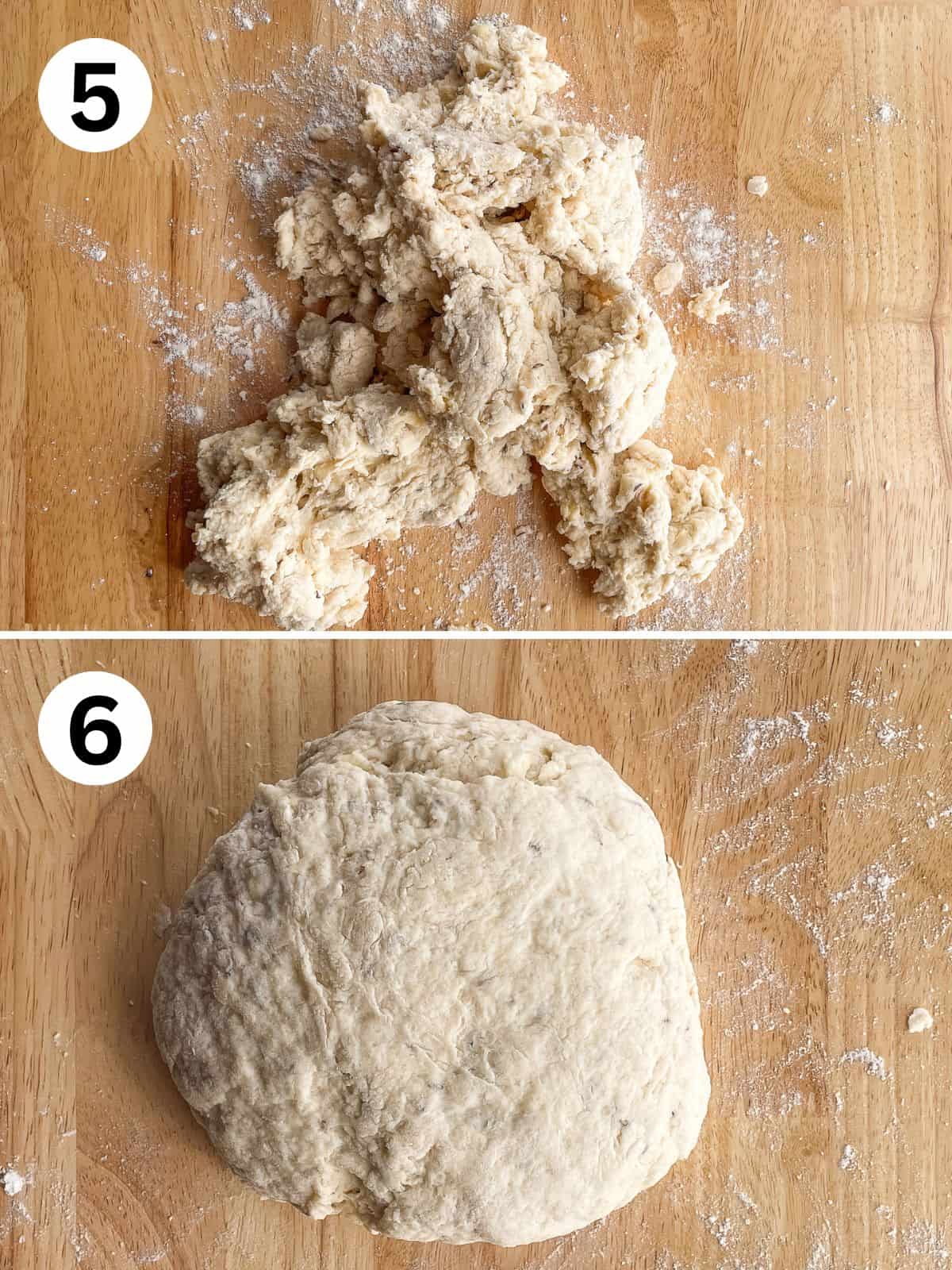
- Plop the dough onto the counter and dust it lightly with flour. Knead it a few times. It should hold together. If it’s too sticky, add a little more flour.
- Shape. Pat the dough into a round. Don’t worry if it’s not a perfect round. The dough spreads a little as it bakes. It doesn’t need to be perfect!
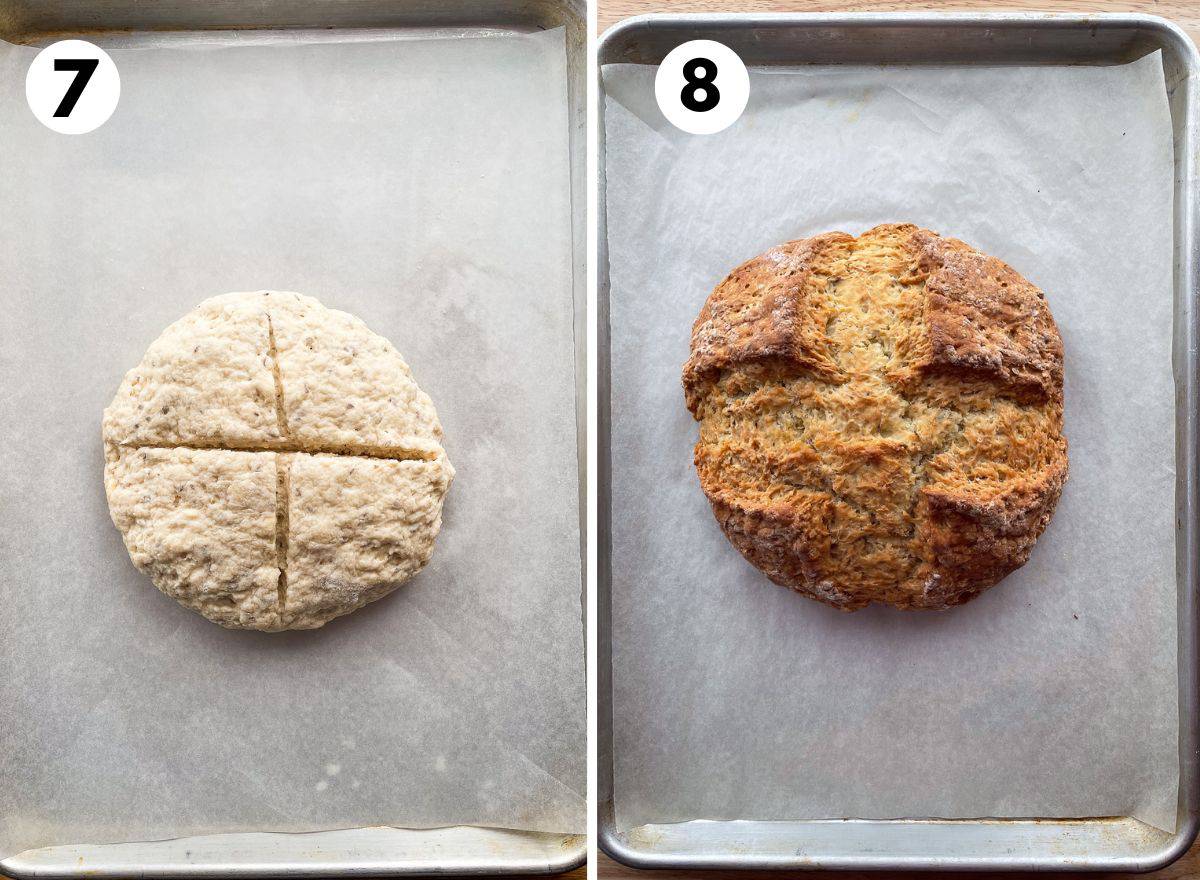
- Place the dough on a parchment-lined baking sheet. Cut an X into the top. This helps it rise as it bakes.
- Bake until it’s golden brown. A loaf takes about 45 minutes to bake.
Tips and Variations
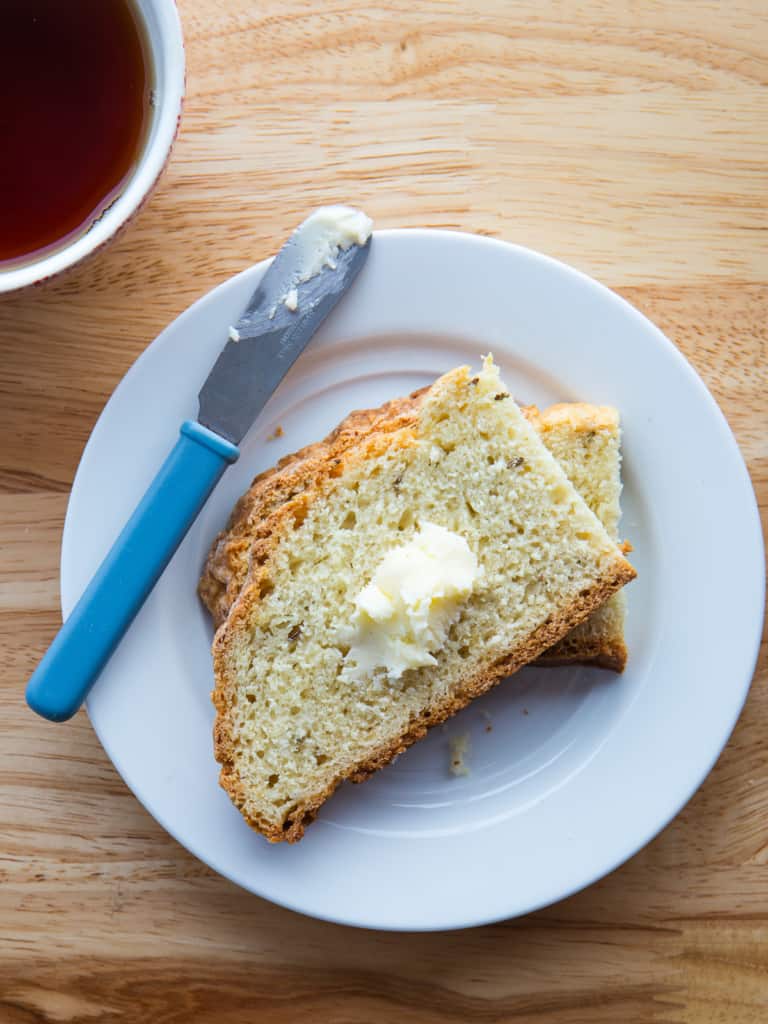
- Use cool butter. The method for making this bread is similar to making biscuits or pie dough. Cool butter is rubbed into the flour. If your butter is too warm, the loaf can turn out heavy.
- Use store-bought buttermilk. Buttermilk adds great flavor to this bread. Homemade buttermilk–a mixture of milk and lemon juice–doesn’t add the right tang. Use store-bought buttermilk for the recipe.
- Preheat your oven. Remember to turn the oven on before you mix the dough. This bread needs to go into a hot oven for the best rise.
- Add Raisins. If you love raisins in your soda bread, add them! Stir the raisins into the bread after the dough comes together.
How to Store Leftovers
This bread keeps for about four days stored on the counter. Place the cooled loaf in a bread bag or container to keep it from drying out.
Recipe originally shared March 2018. Updated to include new photos and step-by-step information March 2024.
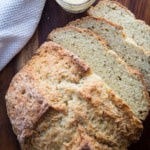
Irish Soda Bread with Caraway Seeds Recipe
Easy Irish Soda Bread with Caraway Seeds. This loaf is made with buttermilk, butter, and a little sugar, which makes for a tender and sweet loaf.
Ingredients
- 3 ½ cups all-purpose flour (16 ounces; 455 grams)
- ⅓ cup granulated sugar (2 ⅓ ounces; 65 grams)
- 2 teaspoons caraway seeds
- 1 teaspoon salt
- 1 teaspoon baking soda
- 4 tablespoons cool butter, cut into 8 pieces, see note (2 ounces; 56 grams)
- 1 ½ cups buttermilk, plus more as needed (12 ounces; 340 grams)
Instructions
-
Preheat oven to 400° F. Line a rimmed baking sheet with parchment paper.
-
Whisk together flour, sugar, caraway seeds, salt, and baking soda in a large bowl. Mix in butter with either your fingers or a pastry cutter until no large pieces remain.
-
Add the buttermilk. Stir until a thick dough forms.
-
Dust your counter lightly with flour. Turn the dough out onto the counter. Knead until a dough forms. If the dough seems dry, add a tablespoon more buttermilk.
-
Place dough on baking sheet. Cut an X, about 1-inch deep, into dough with a sharp knife. This helps the loaf to bake evenly.
-
Bake until a skewer inserted into the middle of the loaf comes out clean, about 45 minutes. If the loaf browns too quickly before the center is done, cover the loaf with foil and bake until the center is done.
-
Remove pan from oven. Allow loaf to cool on the pan for 10 minutes before transferring to a wire rack to cool for an additional 15 minutes or so. Serve warm or at room temperature.
Recipe Notes
Butter Temperature
For this recipe, you don’t want the butter too cold, nor do you want it too soft. You want it just right.
If the weather is cool, which it tends to be in March when I make this bread, I take the butter out of the refrigerator about 45 minutes before I plan on baking. This takes the chill off of the butter but it doesn’t soften too much.
To tell if the butter is the correct temperature, poke it. Your finger should go in with a little light pressure. If it sinks right in, the butter is too soft. If the butter feels hard, it’s too cold.

Julie says
One more recipe for my soda bread collection. I am heading to the store right now for carroway seeds so I can have this with my soup for lunch.
Louise Horner says
I tried this recipe for company on St. Patrick’s Day. I loved the kudos. Thank you for a wonderful recipe!
Elizabeth says
Yay! So glad you enjoyed it.
Jodi Lin Deshler says
I made this bread last night to have with dinner and my husband and I ate it still warm with butter. We both really liked it. I had it again today cold with butter for lunch and I have to say that I love the taste and texture of this bread!! The flavor is absolutely delicious!!!
I made it with whole wheat flour and used coconut sugar instead of white sugar because I am hypoglycemic and those are both better choices for blood sugar issues. I am calling this my rustic rye bread and I will be making it again for sure! Thanks so much for the recipe! I have made plain Irish Soda Bread in the past and liked that but this is absolutely on another level to me!!
Elizabeth says
Yay! I’m so glad you enjoyed it.
Mona Todras says
Would love nutritional information for this delicious bread!!